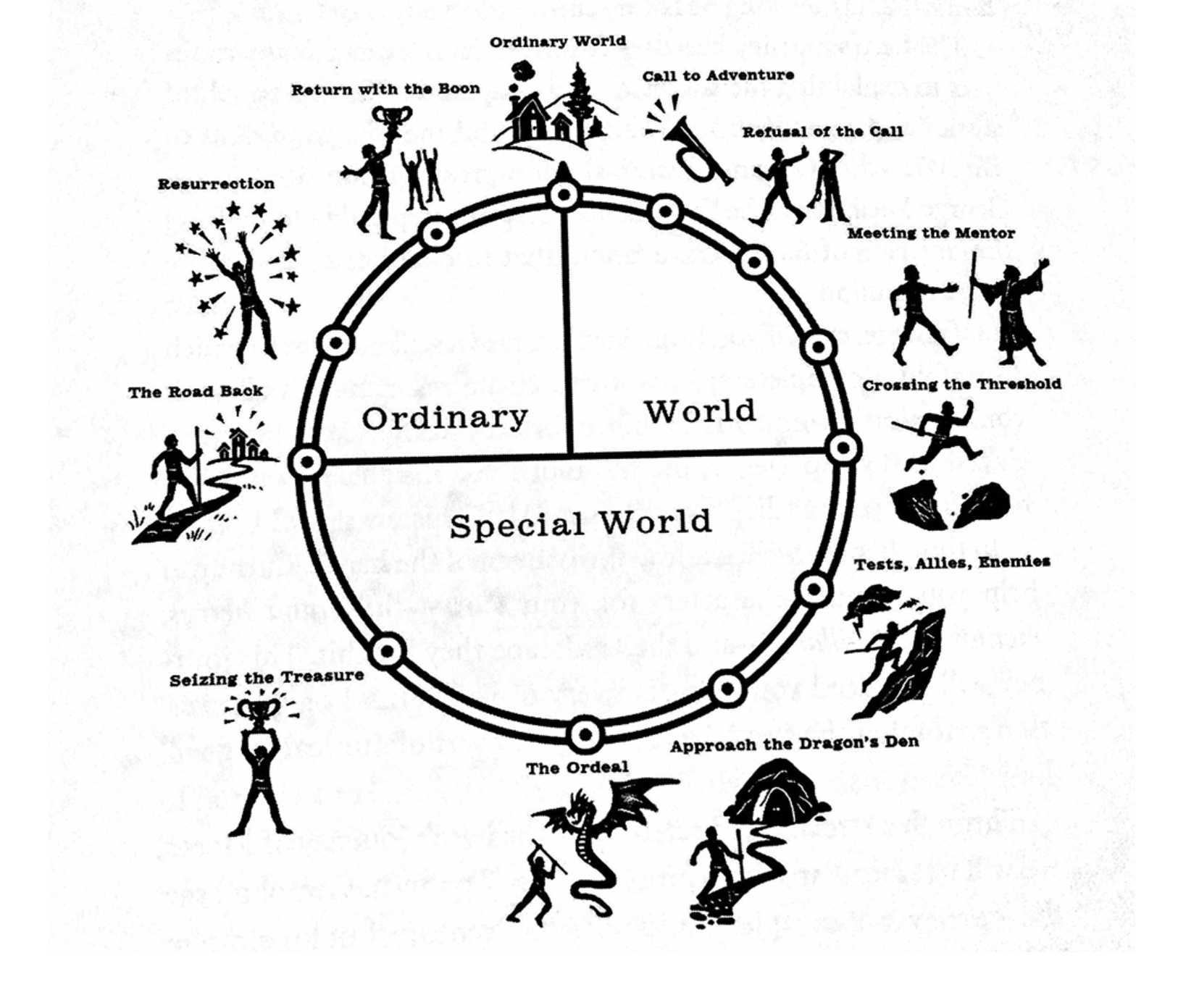The Creative Process
A “Generating System” is like a machine
that keeps pumping out ideas
- such as the Tarot, the i Ching -
they are creative funhouses full of mirrors.
This week, I had a particularly mind-blowing meeting of my two-person writing group, The Co-Dependables.
Co-D is comprised of my old friend Kevin Forhan, a brilliant brewer, thinker and writer.
And me.
We have met every week for more than two years. Every Sunday morning at 10 o’clock (since Covid hit, over the phone), we read each other what we’ve written that week, giving us a deadline, feedback, and support. We started out as two frustrated writers with projects we wanted to finish, and we have developed into greater friends with finished projects and more that are constantly coming into fruition.
We have become a Generating System.
Finding a Creative Process that Works
Kevin and I both had the same goal:
To become writers again.
To find a creative process and practice that works for us.
Each week, we each “check in” briefly. Kevin went first, telling me about his great Saturday, where he worked on his boat for a while, wrote, read, had a rejuvenating nap, had an idea, and wrote some more.
Sounds simple. But we’ve both worked hard on getting to that simple place of balance, where our process flows slowly and easily.
So now, it’s my turn to check in. My week has not been so easy, but has brought baby steps and breakthroughs.
The Self-Coaching Model - Thoughts Create Emotions
I had given myself the assignment from Brooke Castillo’s Self-Coaching Model, her mental model that shows the connection between Circumstances, Thoughts, Emotions, Actions & Results.
So I decided to write down my thoughts and their coinciding emotions every day for two weeks.
One column for thoughts, one column for emotions.
A Sea of Stars
The other night at 3:00 a.m., I awoke, laying there looking out my window at Orion’s Belt and the Pleiades. I cranked up my Night Sky app, and looked farther - SOOO many stars. It made me feel awe and at the same time, I felt minuscule.
But more than that, it gave me a feeling of being overwhelmed. Wordsworth’s concept of The Sublime, and very similar to my most recent anxiety over having TOO many ideas.
Since I was a kid, I have been a ‘Type A” thinker - constantly producing ideas, constantly feeling ambitions, constantly feeling I had to DO MORE. After years of internal work, I realize this is part of my own pathology of perfectionism with a dash of obsessive/compulsive disorder, which runs in my family. It can be painful. Terror, internal panic, struggle. First World Problems. But real.
Keeping a journal helps, because I can write and write my Morning Pages, getting my overwhelming thoughts down on the page. And I vacillate between struggle and calmer moments in meditation:
Navigating the Sea of Ideas
I can choose to swim out into it and drown in the waves. Or I can wade in the shallows.
Or I can sit calmly on the shore and just watch the waves and the tides come in and out.
If Thoughts are Mirrors, my Brain is a Funhouse
And not the kind you have fun in. The kind in horror movies.
This feeling of overwhelm at SOO many stars, made me think of Jean-Paul Sartre’s idea of Nausea - so many thoughts brought me to Google Sartre’s novel, Nausea, where a guy gets overwhelmed by the people, places and things of his life, and realizes his thoughts are the culprit:
If I could keep myself from thinking! I try, and succeed: my head seems to fill with smoke . . . and then it starts again: "Smoke . . . not to think . . . don't want to think ... I think I don't want to think. I mustn't think that I don't want to think. Because that's still a thought." Will there never be an end to it?
My thought is me: that's why I can't stop. I exist because I think . . . and I can't stop myself from thinking. At this very moment, it's frightful, if I exist, it is because I am horrified at existing. I am the one who pulls myself from the nothingness to which I aspire: the hatred, the disgust of existing, there are as many ways to make myself exist, to thrust myself into existence. Thoughts are born at the back of me, like sudden giddiness, I feel them being born behind my head ... if I yield, they're going to come round in front of me, between my eyes, and I always yield, the thought grows and grows and there it is, immense, filling me completely and renewing my existence.
― Jean Paul Satre, Nausea
In the wiki, I came across another quote from Sartre:
On the one hand, the literary object has no substance but the reader's subjectivity ... But, on the other hand, the words are there like traps to arouse our feelings and to reflect them towards us ... Thus, the writer appeals to the reader's freedom to collaborate in the production of the work.
—Jean-Paul Sartre, “What is Literature?”
This clicked something in me, so I followed Sartre’s logic:
Words are traps. Words are thoughts. Thoughts, therefore, are traps.
Thoughts are traps that arouse our emotions
and reflect them back to us.
This is what many other thinkers, therapists and coaches tell us: Buddha, Freud, Jung, Alan Watts, Byron Katie, Brooke Castillo, Bill W.
The thinking mind appeals to the feeling mind/body to collaborate in the production of our actions.
Tarot as a Generating System
Every morning I do Tarot. I pull a card or lay a spread—not to predict the future, but to generate ideas. A tarot card - like a poem, or a painting, or a leaf - is a little tiny “generating system.”
Like I need more ideas.
That is my PROBLEM, I tell myself. Too many ideas, too many thoughts. The Ego thinks its ideas are SOOO important!
Still, ideas are my addiction, my fascination.
We alone control our thoughts and our emotions. And rather than surrendering to the chaos, I try to focus my energy to places that are productive: Make Love, Not War
I have scoured Google for the term “Generating System,” but it may be that I am defining a term that already exists - let me know if you know of a synonym.
So, here is my definition:
Generating System: Any mental model that continually fosters the production of ideas, thoughts, metaphors, symbols, connections, and comparisons for use in the creation of works of art, writing, design, or research.
This might be a subset of what biologist George Kampis calls a “Component System:”
A component-system consists of a collection of components, each of which can act on other components to produce new components.
This definition exists in the biological and cognitive sciences. Nature, in other words, is a component system. A tree creates another tree.
But the generation of new, (seemingly) unrelated ideas that lead to new, seemingly unrelated works of art, architecture or industry, is different, coming from random mental models as diverse as paintings, history, tarot, poetry, nature, etc.
Artists get their ideas from EVERYwhere. But some idea-generators are different in that they are more structured.
You’ve got to have models in your head. And you’ve got to array your experience - both vicarious and direct - on this latticework of models. You may have noticed students who just try to remember and pound back what is remembered.
Well, they fail in school and in life.
You’ve got to hang experience on a latticework of models in your head.
-Charlie Munger
Here are a few mental models that for me, also work as Generating Systems:
A deck of Tarot cards, Freud’s concept (mental model) of the Id/Ego/Superego; The Hero’s Journey from Joseph Campbell’s Hero with a Thousand Faces. All of “Nature” is a Generating System, in that we see metaphors everywhere in it. A mountain with its height, strength and majesty. And on and on.
In other words:
A Generating System is a structured way of thinking or seeing - a mental model or paradigm - that helps us grow creative ideas.
An artistic petri dish or terrarium, if you will.
Here is a little more information about the previous three examples of historical generating systems:
The Book of Nature
In the Middle Ages, a common mental model was that nature is a book to be read to learn of God’s will. Much of medical science was based on this Book of Nature model. For instance, the idea of Signatures. Since a walnut is shaped like a brain, it must be meant to heal the brain. The flower eyebright looks like an eye, so it must be meant to heal eye infections. In these cases, it would have been better to use nature’s Generating System to create ideas for art rather than science.
This idea worked as a Generating System for Elizabeth Gilbert’s book The Signature of All Things.
2. The Hero’s Journey
In Joseph Campbell’s cycle from his book Hero with a Thousand Faces, the Reluctant Hero (not a hero yet), is called to a quest, meets several helpers and challenges, enters a world of wonder, finds the gift, and returns to heal her/himself and community. This model has been an amazing Generating System - because although it is BASED on the myths of history, it has also generated NEW myths, ways of thinking about psychology, art, commerce, and more. It is a mental model that is a record of our culture’s Generating Systems; and it is a Generating System itself.
(George) Lucas had already written two drafts of Star Wars when he rediscovered Joseph Campbell's The Hero With a Thousand Faces in 1975 (having read it years before in college). This blueprint for "The Hero's Journey" gave Lucas the focus he needed to draw his sprawling imaginary universe into a single story. (moongadget.com)
3. The Tarot
First seen in the medieval period in Italy as a card game, then eventually became a parlor trick of predicting the future.
Eventually, since WWII, really, the Tarot has become popular worldwide as a tool for self-improvement, psychological discussion and creative inspiration. Each 78-card deck is system of cycles of stages of a journey with iconic characters along that path, a traditional court of Kings, Queens, Knights and Pages, as in a regular deck, as well as images of elemental metaphors such as sun, moon, air, fire, earth, water. The viewer uses this system of metaphors to come up with new ideas and thoughts, ways of viewing their personal environment and relationships, for personal growth, or, in many artist’s cases, as a “prompt” to generate ideas for paintings, poems, plays, etc.
So, any Generating System IS, necessarily, a mental model. But the way an artist uses it is not necessarily to solidify and understand information, but to generate NEW and more CREATIVE information that didn’t exist in quite that way before - a painting, an essay, a play, a design.
That is, I guess, where art differs from science. Science attempts to create mental models that explain the world through evidence, replicable and provable. Art also attempts to understand the world, but instead creates a different kind of mirror that reflects back the unknown, the mysterious.
Art generates itself from mental models (generating systems) and creates something new that shows us something new, something previously unseen.
What Generating Systems do you use?
Let me know in the Comments!
NOTES:
Goertzel, Ben, Self-Generating Systems in Biology and Cognitive Science
https://link.springer.com/chapter/10.1007/978-1-4757-2197-3_7








